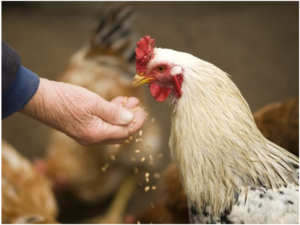
Asian feedmillers continuing to face high feed costs are finding no takers for the pricier meat they produce. They fear this would result in a drop in meat consumption, a worrying concern for all the in the industry.
USDA reports released in early April showed corn, wheat, and other grain markets settle, though they remain at an elevated level.
World soybean prices in the meantime remain high and this is affecting markets from India to China. In China, high prices of soybean have resulted in some of the lowest crush levels in history.
Low meat prices at present have exacerbated the issue and crushers have cut back significantly. The USDA expects soybean prices to remain high for the remainder of 2021/2022 as global stocks are limited.
Indian poultry producers who are seeing a similar scenario have requested the government to stop hoarding of grain. Industry players have been hit by both high corn as well as soybean prices. The latter has the feed industry looking for imports to ease pressure on the market.
Short and long term solutions
This persistent trend of high feed costs is bound to have long term impacts down the food chain. We see Malaysian livestock farmers ask the government to intervene to control feed prices as they see red meat prices escalating beyond consumer’s reach. They hope government control in reigning in high feed grain prices would help them.
In the meantime, many other countries are looking at cultivating short and long-term solutions to control feed prices. In the short term, countries like China have started to purchase more alternatives such as broken rice as replacement for soybean.
The USDA’s import forecast for broken rice has been raised by 500,000 tons in MY 2021/2022 to 5.2mt, the highest since 2018/2019. Their main supplier is India, where China has imported 870,000 tons in the first eight months of MY 2021/2022. Interestingly the USDA also notes that China is relooking at Australian barley this year given the high price of corn.
Philippines feedmillers on the other hand are following various sourcing strategies to minimize grain purchasing costs. They are employing hedging tactics and increasing warehouse and inventory space to minimize the impact on production.
In the long term, countries such as Singapore are investing heavily in alternative feed proteins such as insect meal. Singapore’s Nutrition Technologies will build its second insect meal plant in Malaysia to quadruple its existing volumes.
How well each strategy works depends on the local environment in which each feedmiller operates in. However, it is always good to have a long term plan to minimize the impacts of such market cycles, whilst fighting the immediate fires in the short term.
